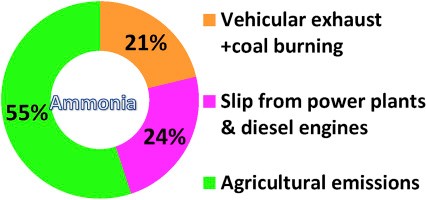Identifying the sources of aerosol ammonium is essential because ammonium can impact the Earth’s radiative balance, as well as human health and biological diversity. The sources of ambient ammonia concentrations can be quantified based on the stable isotopic composition of ammonia for various endmembers. However, isotopic source apportionment of aerosol ammonium is challenging in the urban atmosphere, where there is excess ammonia and nitrogen isotopic fractionation commonly occurs.
Prof. PAN Yuepeng from the Institute of Atmospheric Physics at Chinese Academy of Sciences, and his colleagues reported a new chemical method to determine the nitrogen stable isotope composition at natural abundance for ammonium. This method is successfully used in a year-round isotopic measurement and source apportionment of aerosol ammonium in urban Beijing. They show the source dependence of the isotopic abundance of aerosol ammonium both in winter and summer, with isotopically light and heavy ammonium associated with strong northerly winds and sustained southerly winds, respectively. The team found that on an annual basis, 37−52% of the initial ammonia concentrations in urban Beijing arises from fossil fuel emissions, which are episodically enhanced by air mass stagnation preceding the passage of cold fronts.
Contrary to common opinions, this new study shows that non-agricultural emissions (73%) are more important than agricultural sources (27%) during haze pollution events.

Contributions of emissions from various source sectors to the atmospheric ammonia concentrations in urban Beijing. This figure shows the results based on year-round isotopic measurements. However, under conditions with polluted southernly flow, 73% (35%–95%) of the initial ammonia could be attributed to fossil fuel emissions (image by PAN Yuepeng)
"Our study presents a carefully executed application of existing stable nitrogen isotope measurement and mass-balance techniques to a very important problem: understanding source contributions to atmospheric ammonia in Beijing. ” says Pan. “For environemtnal policy makers, we suggest priority should be given to controlling non-agricultural sources to ammonia for haze regulation in urban regions.”
This work was supported by the National Key Research and Development Program of China (2017YFC0210100) and the National Natural Science Foundation of China (41405144).
Reference: Pan, Y., and Coauthors, 2018: Isotopic evidence for enhanced fossil fuel sources of aerosol ammonium in the urban atmosphere. Environ. Pollut., 238, 942-947. doi:10.1016/j.envpol.2018.03.038.
https://www.sciencedirect.com/science/article/pii/S0269749117335674
Contact: LIN Zheng, jennylin@mail.iap.ac.cn
